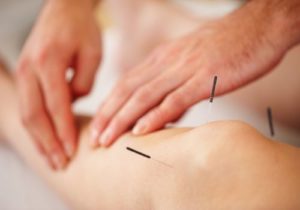Acupuncture
Why Acupuncture?
 There are currently more than 200 conditions recognized by the World Health Organization that are effectively treated with Acupuncture. Consider Acupuncture for any of the conditions listed below and much, much more.
There are currently more than 200 conditions recognized by the World Health Organization that are effectively treated with Acupuncture. Consider Acupuncture for any of the conditions listed below and much, much more.
- Pain
- Emotional Imbalances
- Addictions
- Gynecological Disorders
- Digestive Disorders
- Traumatic Injuries
- Neurological Disorders
- Respiratory Conditions
- Oncology Support
Acupuncture is one of the oldest, most commonly used medical procedures in the world. Originating in China more than 2,000 years ago, acupuncture began to become better known in the United States in 1971, when New York Times reporter James Reston wrote about how doctors in China used needles to ease his abdominal pain after surgery. Research shows that acupuncture is beneficial in treating a variety of health conditions.
How does Acupuncture work?
Acupuncture functions like small tuning forks, improving the conductivity along body pathways, allowing for better communication between body systems and supplying the electromagnetic field of the body with an opportunity to re-balance any stagnation that may have developed in the tissues or organ systems.
The procedure of Acupuncture consists of a licensed and trained practitioner inserting very thin stainless steel needles (about 2 hairs width) into specific ‘acupoints’ to support systems that are out of balance or not running efficiently. This process stimulates a variety of physiological and biochemical activity; some of these effects are systemic and some are local.
Systemic Effects
Improves Blood Circulation
Increases White Blood Cell Production
Supports Lymphatic Drainage
Triggers Pain Reduction
Enhances Nerve Conduction
It’s important to explore the power of ancient traditions like acupuncture using the lense and powerful tools provided us by modern medicine.
Blood Circulation
Similar to the effect on lymph flow, Acupuncture increases the capillary dilation and rate of flow, helping to move along any stagnant factors or weaknesses either in the walls of the capillaries, arteries and veins, or in the blood chemistry itself. Additionally, the fact that we are penetrating the skin with a needle increases blood circulation in of itself. This is one of acupuncture’s clearest benefits-when blood circulation is good, blood is feeding all cells and also sweeping away any unnecessary or used chemicals or cellular biproducts. Things can get messy very quickly when the blood is not circulating smoothly or broadly. Acupuncture is documented to improve blood circulation and hence the nutrients and very breath of life every cell needs.
White Blood Cells
Because acupuncture penetrates the surface of the skin in what I like to call a “microsurgery”, it causes a small injury, alerting the body’s defenses and inducing the healing process to ensue. The body detects the needle penetration and sends white blood cells to the area to fight any possible infection, and when they find nothing wrong they go about cleaning up the area of any unnecessary stagnation that might be slowing the body down-scar tissue, excess fluid/edema, any old congealed blood, etc.
Lymphatic Drainage
When the body encounters an excessive or inefficient accumulation of fluid it uses little vacuums, called lymph nodes, all over the body to absorb that excess and safely transport it out of the body. The lymph nodes become congested from absorbing too much excess, either because the person’s kidneys are not working correctly, they are continually sick and those toxins are getting stored in the lymph nodes, or their eating habits cause them to retain fluids. Acupuncture points are often selected in proximity to lymph nodes when there is this type of imbalance to increase the activity and circulation of the lymph nodes, assisting them in ridding themselves of old debris so that they can do their job more efficiently.
Nerve Conduction
The signals from nerves to and and from the spinal cord and the brain are a constant occurrance all over our bodies. Much like a highway that accumulates debris with so much constant use, or like a power line that gets wear and tare, our nerve signals can become congested, only ‘commuting’ to local nerve centers or resending the same signal (pain signal, muscle contraction message) again and again. Acupuncture assists in amping up the conduction signals along the nerve pathways so that local and central nerve nodes can give and receive complete communications. This results in a reduction of redundant pain messages or continuous overstimulation of muscles or organ systems, allowing the body to get back to the work it needs to do.
Endorphins and Pain Reduction
As it is a slightly invasive thing to penetrate the skin, acupuncture alerts the body of an injury, and the body responds by infusing endorphins or pain reducing chemicals into the blood stream.